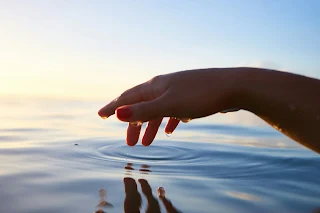<script async src="https://pagead2.googlesyndication.com/pagead/js/adsbygoogle.js?client=ca-pub-6602315825276268" crossorigin="anonymous"></script>
Understanding Water Therapy and Its Benefits
<script async custom-element="amp-auto-ads"src="https://cdn.ampproject.org/v0/amp-auto-ads-0.1.js"> </script>
Water therapy, also known as hydrotherapy, is a therapeutic approach that utilizes water in various forms to promote health and well-being. This practice dates back to ancient civilizations, where it was used for its healing properties. Today, hydrotherapy encompasses a wide range of treatments, including hot and cold water treatments, steam baths, and aquatic exercises.
Hot water treatments, such as warm baths and hot tubs, help to relax muscles, alleviate pain, and improve circulation. The application of heat dilates blood vessels, enhancing blood flow and reducing stiffness. Conversely, cold water treatments, such as cold compresses and ice baths, are effective in decreasing inflammation and numbing pain. Alternating between hot and cold treatments, known as contrast hydrotherapy, can stimulate circulation and boost the immune system.
Steam baths and saunas are another popular form of water therapy. These treatments induce sweating, which helps to detoxify the body, improve skin health, and promote relaxation. The heat from steam baths can also open up airways, making them beneficial for respiratory health.
Aquatic exercises, performed in a pool, offer a low-impact workout that is gentle on the joints. These exercises can improve cardiovascular fitness, increase muscle strength, and enhance flexibility. The buoyancy of water reduces the strain on the body, making it an ideal exercise medium for individuals with arthritis or other mobility issues.
One of the most significant benefits of water therapy is its positive impact on cardiovascular health. By improving circulation and reducing stress, water therapy can help regulate blood pressure. A study published in the Journal of Physiotherapy found that regular hydrotherapy sessions significantly lowered blood pressure in hypertensive patients. Expert opinions also suggest that the calming effects of water therapy can reduce stress hormones, which are known to contribute to high blood pressure.
In summary, water therapy offers a multitude of health benefits, particularly for those seeking to manage their blood pressure. Whether through hot and cold treatments, steam baths, or aquatic exercises, incorporating water therapy into your routine can lead to improved cardiovascular health and overall well-being.
Practical Water Therapy Techniques for Lowering Blood Pressure
Implementing water therapy to lower your blood pressure can be a highly effective strategy when done correctly. Here are several actionable techniques to help you get started:
Alternating Hot and Cold Showers: This method involves switching between hot and cold water during your shower. Start with warm water for about three minutes, then switch to cold water for 30 seconds. Repeat this cycle three to four times, ending with cold water. This alternating temperature can help improve circulation and reduce blood pressure. Aim to practice this technique two to three times a week.
Warm Baths with Epsom Salts: Soaking in a warm bath with Epsom salts can also help lower blood pressure. Fill your bathtub with warm water and add two cups of Epsom salts. Soak for 15-20 minutes, allowing the magnesium sulfate to absorb through your skin, which can help relax blood vessels and improve blood flow. A frequency of two to three times per week is recommended for optimal benefits.
Water Aerobics or Swimming: Engaging in water-based exercises like water aerobics or swimming is an excellent way to lower blood pressure. These activities provide a low-impact, full-body workout that enhances cardiovascular health. Aim to participate in water aerobics or swimming sessions for at least 30 minutes, three to four times a week.
Creating a conducive environment for water therapy at home is essential. Ensure your bathing area is comfortable and safe, with non-slip mats and accessible toiletries. If you prefer, access local aquatic facilities such as community pools or fitness centers, which often provide structured water aerobics classes.
Drinking water can help lower blood pressure in several ways
- Dehydration and Blood Pressure: Dehydration can lead to thicker blood and increased blood pressure. Drinking enough water can help prevent dehydration and reduce the risk of high blood pressure.
- Vasopressin and Blood Vessels: When the body is dehydrated, it secretes vasopressin, a hormone that constricts blood vessels and increases blood pressure. Drinking water can help reduce vasopressin levels and dilate blood vessels.
- Calcium and Magnesium: Adding calcium and magnesium to drinking water can help lower blood pressure. These minerals can help relax blood vessels and improve blood flow.
- Hydration and Blood Pressure Regulation: Drinking enough water can help regulate blood pressure and prevent hypertension. Aim to drink at least six to eight glasses of water per day.
- Lifestyle Changes: Drinking water is just one aspect of a healthy lifestyle that can help lower blood pressure. Other lifestyle changes include exercising regularly, eating a balanced diet, managing stress, and getting enough sleep.
To start water drinking therapy; when you wake up in the morning, drink two glasses of warm water. And drink a glass of water 30 minutes before breakfast; and during breakfast, try not to drink more than just to sip water in order to get the food down into your stomach; and wait for about one hour before you drink two cups of water after your breakfast. Repeat this method whenever you eat your meal. Additionally, drink a cup of warm water shortly before you take your bath in the morning or evening. It's important to note that while drinking water can help lower blood pressure, it's just one aspect of a healthy lifestyle. If you have high blood pressure, you should consult with your doctor and make lifestyle changes as recommended.
Precautions are necessary when practicing general water therapy, especially for individuals with pre-existing health conditions. Always consult with your healthcare provider before starting any new therapy. Additionally, be mindful of water temperature to avoid burns or chills, and ensure proper hydration before and after sessions to maintain overall health and w
<amp-auto-ads type="adsense”data-ad-client="ca-pub-6602315825276268"> </amp-auto-ads>
ell-being.






No comments:
Post a Comment